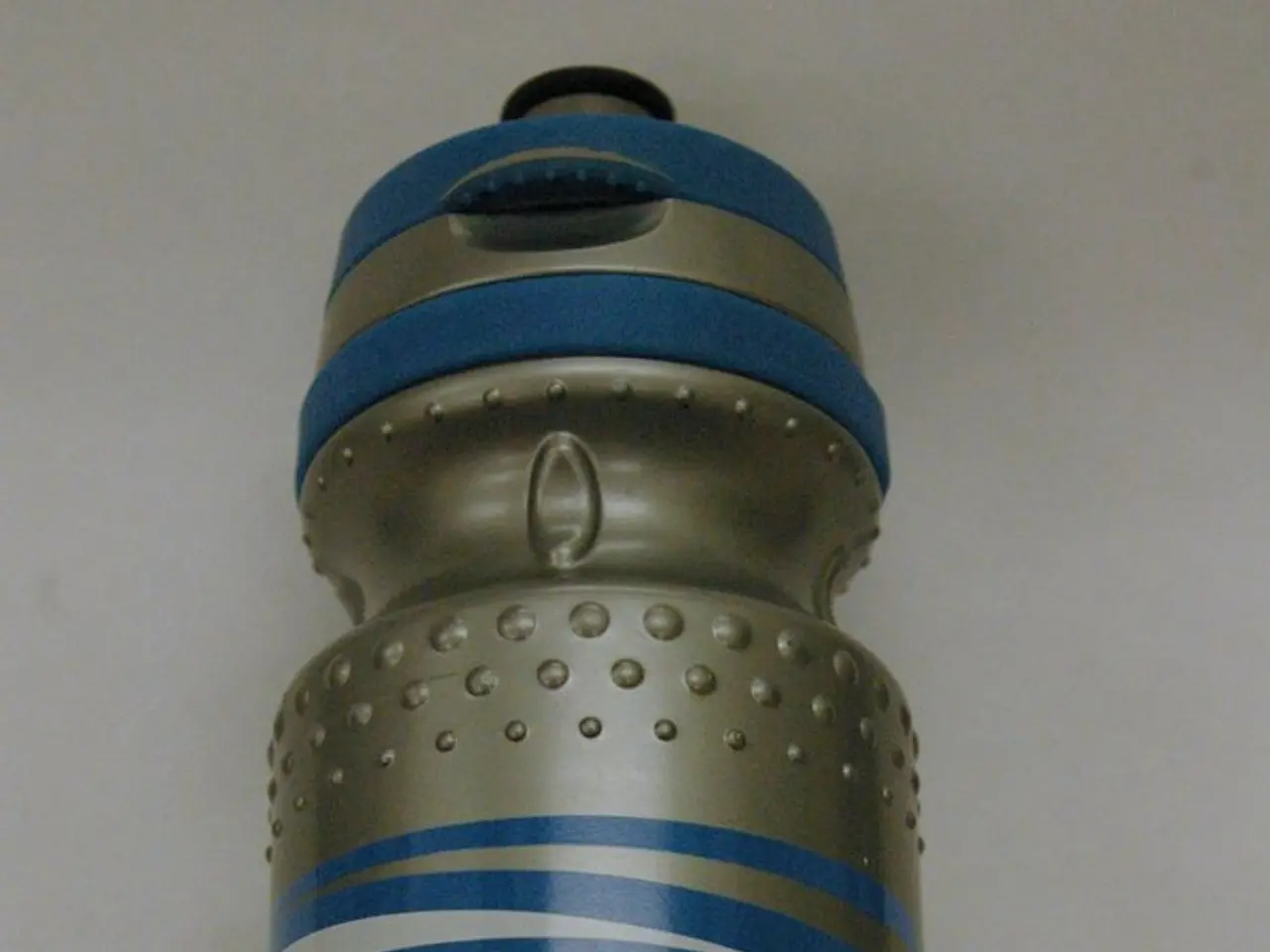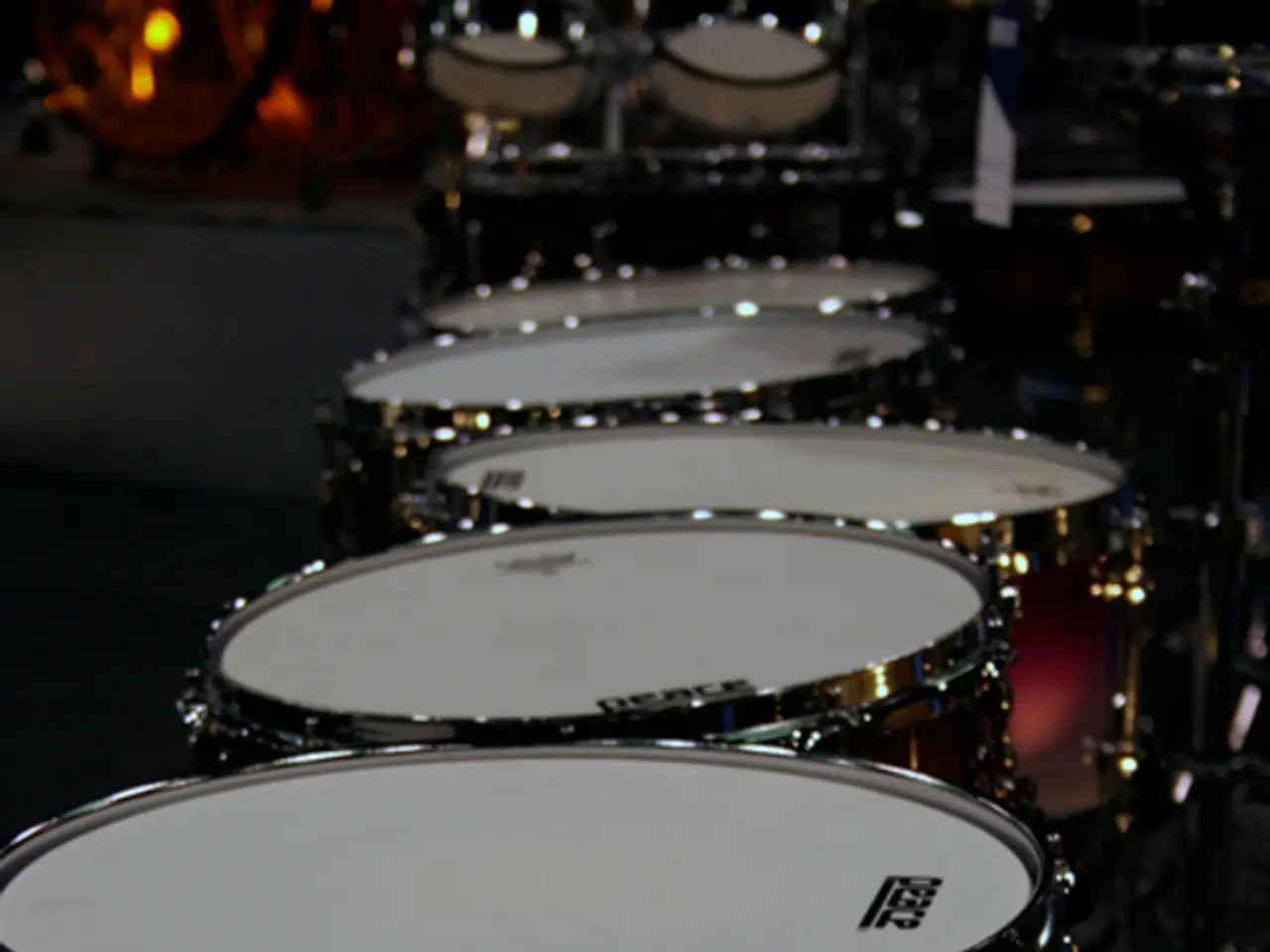Lymphoma Varieties and Their Implications: A Breakdown of Different Non-Hodgkin Lymphoma Subtypes
Non-Hodgkin's Lymphoma (NHL) is a type of cancer that affects the immune system's lymphocytes. This article provides an overview of the different subtypes of NHL, their characteristics, and treatment options.
B-cell Non-Hodgkin's Lymphoma Subtypes and Characteristics
B-cell lymphomas make up about 85–90% of NHL cases. They can be either aggressive (high-grade) or indolent (low-grade), arising from different stages of B-cell development.
Aggressive B-cell lymphomas
Aggressive B-cell lymphomas are characterized by rapidly growing tumors. Key subtypes include:
- Diffuse large B-cell lymphoma (DLBCL): The most common NHL type, often found in lymph nodes but can be extranodal. It includes variants like T-cell/histiocyte-rich large B-cell lymphoma and EBV-positive DLBCL.
- Burkitt lymphoma: Very aggressive, often with high proliferation rates.
- Mantle cell lymphoma (MCL): Can be aggressive or indolent; originates typically from B cells before germinal center exposure. Some MCL cases carry hypermutated IGHV, suggesting a post-germinal center origin.
- Primary mediastinal (thymic) large B-cell lymphoma: Aggressive lymphoma arising in the mediastinum (chest area).
- High-grade B-cell lymphoma with double or triple hits: Named for multiple genetic rearrangements, very aggressive.
- Lymphoblastic lymphoma: Aggressive, mostly in children/young adults.
- Primary central nervous system DLBCL and AIDS-associated lymphoma: Aggressive extranodal forms.
Indolent (low-grade) B-cell lymphomas
Indolent lymphomas grow and spread slowly. Key subtypes include:
- Follicular lymphoma (FL): Arises from germinal center B cells; slowly progressive with prolonged survival.
- Small lymphocytic lymphoma (SLL)/chronic lymphocytic leukemia (CLL): Indolent; small mature B cells.
- Marginal zone lymphoma (MZL): Includes mucosa-associated lymphoid tissue (MALT) lymphoma, splenic marginal zone lymphoma; post-germinal center origin.
- Some cases of mantle cell lymphoma: Rarely indolent.
T-cell Non-Hodgkin's Lymphoma Subtypes and Characteristics
T-cell lymphomas are less common, originating from T lymphocytes. Key subtypes include:
- Peripheral T-cell lymphomas (PTCL): A diverse group of generally aggressive lymphomas arising from mature T cells.
- Anaplastic large cell lymphoma (ALCL): Often aggressive, can be systemic or cutaneous.
- Angioimmunoblastic T-cell lymphoma (AITL): Characterized by systemic symptoms and immune dysregulation.
- T-lymphoblastic lymphoma: Aggressive, mainly in children and young adults.
Key Characteristics Summary:
| Subtype | Cell Origin | Aggressiveness | Typical Features | |----------------------------|-------------------------|-----------------------|------------------------------------------------------------| | Diffuse large B-cell lymphoma (DLBCL) | Germinal center B cells | Aggressive | Rapid growth, nodal or extranodal, common NHL type | | Burkitt lymphoma | Germinal center B cells | Highly aggressive | Very fast proliferation, often in children/young adults | | Mantle cell lymphoma (MCL) | Pre- or post-germinal center B cells | Variable (indolent or aggressive) | Involves lymph nodes, sometimes indolent | | Follicular lymphoma (FL) | Germinal center B cells | Indolent | Slow progression, prolonged survival | | Marginal zone lymphoma | Post-germinal center B cells | Indolent | MALT lymphoma, splenic marginal zone; often localized | | Small lymphocytic lymphoma | Mature B cells | Indolent | Related to CLL, slow progression | | Peripheral T-cell lymphoma (PTCL) | Mature T cells | Aggressive | Systemic symptoms, diverse histology | | Anaplastic large cell lymphoma (ALCL) | T cells | Aggressive | Can be cutaneous/systemic, ALK+ or ALK- | | Angioimmunoblastic T-cell lymphoma (AITL) | T cells | Aggressive | Immune dysregulation, systemic symptoms | | T-lymphoblastic lymphoma | Immature T cells | Aggressive | Mainly young patients, rapid progression |
This classification highlights the diversity of NHL subtypes based on their lymphocytic origin and clinical behavior. Accurate subtype diagnosis relies on immunophenotyping, genetic studies, and clinical presentation to guide therapy and prognosis.
Diagnosis and Treatment
A biopsy of an affected lymph node is used to diagnose NHL and identify the subtype. Treatment for indolent NHL can vary according to factors such as the stage of the cancer, a person's age, overall health, and the specific NHL subtype. Aggressive NHLs often require prompt treatment, which may include combined medication, chemotherapy, and radiation therapy.
It's important to note that NHL is not one disease but an umbrella term for many different lymphoma subtypes. Symptoms such as unexplained weight loss, fever, swollen lymph nodes, and night sweats may indicate NHL. If you experience these symptoms, consult a healthcare professional for a proper diagnosis and treatment plan.
[1] Harris NL, Jaffe ES, Stein H, et al. The 2016 World Health Organization Classification of Tumours of Haematopoietic and Lymphoid Tissues. Blood. 2016;127(20):2375–2415. [2] Greiner TC, Swerdlow SH, Campo E, et al. The 2017 revision of the World Health Organization classification for tumours of haematopoietic and lymphoid tissues: a review. British Journal of Haematology. 2017;176(6):715–725. [3] Alizadeh AA, Lockerman JD, Chen Z, et al. The molecular classification of diffuse large B-cell lymphoma. Nature. 2000;403(6767):503–511. [4] Swerdlow SH, Campo E, Pileri SA, et al. The 2017 World Health Organization Classification of Tumours of Haematopoietic and Lymphoid Tissues. Blood. 2017;130(2):111–1205. [5] Alizadeh AA, Eisenhauer EL, Davis-Smyth DA, et al. Distinct clinical presentations and survival outcomes of diffuse large B-cell lymphoma with the BCL-6, MYC, and BCL-2 gene rearrangements. Blood. 2000;96(12):3779–3786.
- Science has identified various subtypes of Non-Hodgkin's Lymphoma (NHL), with B-cell lymphomas making up about 85–90% of cases. A key medical-condition within this category is lymphocytes, a type of white blood cell involved in fighting infections, which are affected by NHL.
- Lymphocytosis, an abnormal increase in the number of lymphocytes in the blood, can occur in some individuals with B-cell lymphomas, especially those with indolent subtypes like follicular lymphoma (FL) or small lymphocytic lymphoma (SLL).
- Other lymphomas, such as T-cell lymphomas like Anaplastic large cell lymphoma (ALCL) or Angioimmunoblastic T-cell lymphoma (AITL), also affect the immune system but originate from a different type of lymphocyte (T cells) and exhibit unique characteristics. This highlights the importance of understanding and differentiating various medical-conditions within the larger category of NHL for accurate diagnosis and treatment.




